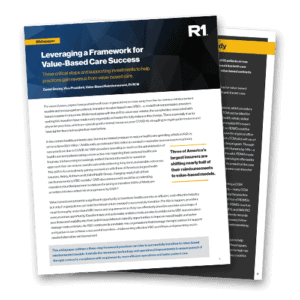Implementing effective VBC workflows and generating much-needed alternative reimbursement
With providers spending so much on the administration of health care and patients taking a more active role in their personal healthcare finances, it is clear the industry needs to reward an approach that can reduce overall costs while delivering long-term, sustainable outcomes. This shift in focus is already gaining momentum with three of America’s largest health insurers: Aetna, Anthem and UnitedHealth Group, changing nearly half of their reimbursements to VBC models.
While most agree with the shift to value over volume, the complexities associated with making this transition have made many organizations hesitant — particularly physician practices who are struggling to regain patient volumes and facing tighter financial margins than ever before.
As VBC continues its inevitable rise, organizations that leverage the right partner for support and guidance can achieve a successful transition — implementing effective VBC workflows and generating much-needed alternative reimbursement.




